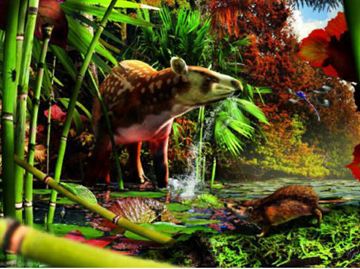The creature was about the size of a human thumb and
lived in the northern British Columbia rainforest at a time when the earth was
warm.
The world's tiniest hedgehog – only 2 inches long –
has been discovered in Canada in the form of a fossil 50 million years old.
 Jaelyn Eberle admits there's a "cute
factor" at play, but the paleontologist says her fossil find is
groundbreaking all the same.
Jaelyn Eberle admits there's a "cute
factor" at play, but the paleontologist says her fossil find is
groundbreaking all the same.
The University of Colorado professor, alongside
Canadian Museum of Nature scientist Natalia Rybczynski, has identified remains
of a tiny, never-before-seen prehistoric hedgehog and a primordial cousin of
the modern-day tapir, the first 50-million-year-old furry critters found in the
renowned Driftwood Canyon fossil bed at Smithers, B.C. 
Mammals from this period, the early Eocene Epoch,
have never been found in Canada below the Arctic, Eberle said. Their research,
published Tuesday in the Journal of Vertebrate Paleontology, could be a window
into a lost mammalian world.
"Plants and insects have been on the radar for
sometime, but fossil mammals haven't turned up," said Eberle. "It's a
blank slate until these B.C. mammals came along."
Tiny fragments of the ancient fauna were discovered
by students working with Dave Greenwood, a Brandon University professor who
co-authored the research with Eberle and Rybczynski. Since Greenwood
specializes in plants, he sent the fossils to his fellow researchers, who went
to work identifying them.
The tapir relative, called a Heptodon, was
relatively easy to spot from the jawbone fossil they had, said Eberle. The
hedgehog was a different story, not only because it was an undiscovered
species, but because the piece of the animal's skull was so small — only about
half a centimetre long, said Rybczynski.
This forced them to use 3D scanning technology to
examine the specimen, which allowed them to herald a new species: the Silvacola
acares ("tiny forest dweller").
The scientists hope to find more Eocene mammals in
Driftwood Canyon, which could shed light on how the ancestors of modern animals
lived in an era that saw the warmest global temperatures since the extinction
of the dinosaurs, when there were no polar ice caps and alligators could be
found in the Arctic, said Rybczynski.
"We can look in the past," she said,
"to get an idea of what's going to happen."










No comments:
Post a Comment